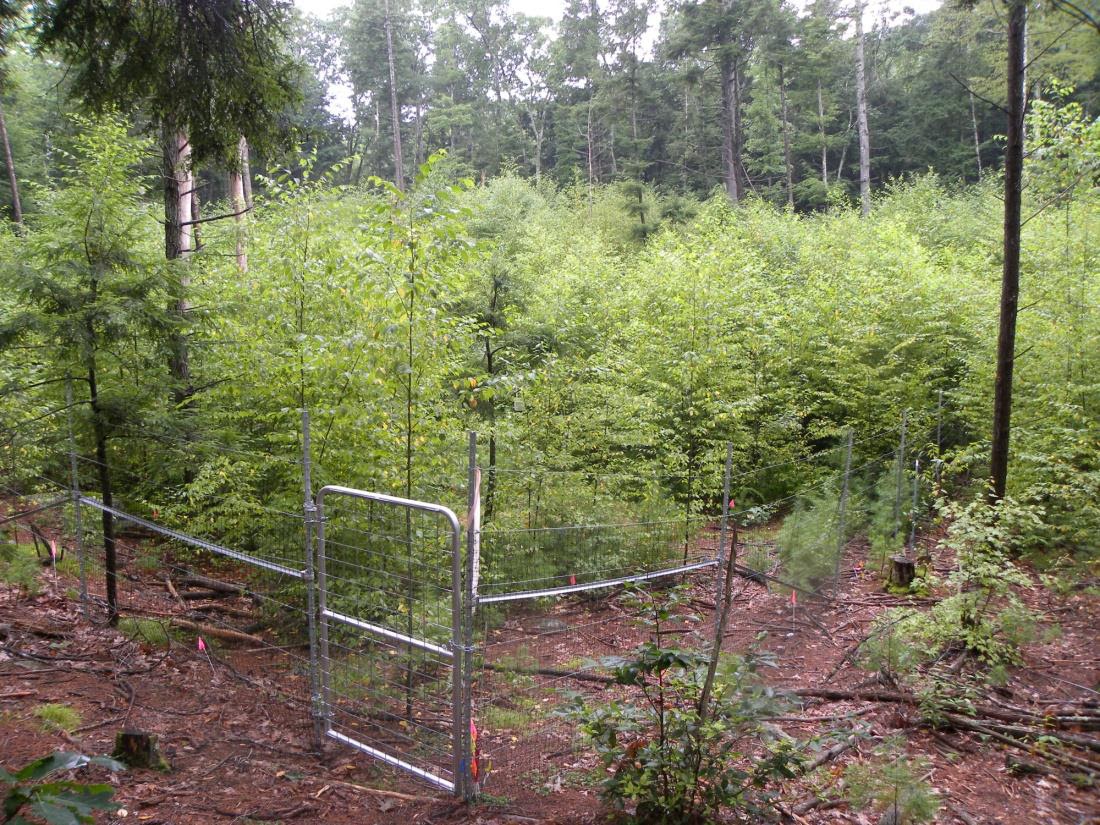You are here
Part one of biotic change in hemlock forests - Moose, deer, and porcupines
This summer, along with my mentor Ed Faison, a research associate at Harvard Forest and ecologist at Highstead Arboretum in Connecticut, I have been working on a project investigating the impacts of herbivory by moose, deer, and porcupine on regenerating forests.
 More specifically, we are interested in looking at regeneration within stands of eastern hemlock (Tsuga canadensis). Here in New England, hemlock forests are under attack. The hemlock woolly adelgid (Adelges tsugae), an exotic insect already responsible for widespread mortality of hemlock throughout the Eastern U.S., has arrived in Massachusetts and portends the demise of the tree here as well. In order to better understand the implications of this loss, Harvard Forest researchers have designed an experiment which aims to better understand the implications of this disturbance on forest ecosystem dynamics. Two hemlock removal treatments, including a logged treatment designed to simulate salvage logging, and a girdled treatment, simulating mortality caused by the adelgid, are coupled with two control treatments—a hemlock control (now infested with the adelgid) and a hardwood control, which represents future conditions of most hemlock stands. With two replicates of each of the four treatments, there are eight total research plots involved in the experiment.
More specifically, we are interested in looking at regeneration within stands of eastern hemlock (Tsuga canadensis). Here in New England, hemlock forests are under attack. The hemlock woolly adelgid (Adelges tsugae), an exotic insect already responsible for widespread mortality of hemlock throughout the Eastern U.S., has arrived in Massachusetts and portends the demise of the tree here as well. In order to better understand the implications of this loss, Harvard Forest researchers have designed an experiment which aims to better understand the implications of this disturbance on forest ecosystem dynamics. Two hemlock removal treatments, including a logged treatment designed to simulate salvage logging, and a girdled treatment, simulating mortality caused by the adelgid, are coupled with two control treatments—a hemlock control (now infested with the adelgid) and a hardwood control, which represents future conditions of most hemlock stands. With two replicates of each of the four treatments, there are eight total research plots involved in the experiment.
In order to assess the impacts of browsing by moose and deer, 15x30m exclosures were erected at each of the eight plots in the fall of 2011. At each plot, a grid of 4m2 subplots has been established. In each I identify and measure all of the stems >30cm, assess the % of the browse on each stem, and record any pellet groups belonging to moose, deer, or porcupine.
Glamorous work it is not. There are thousands of stems to record, and it would rate high on a monotony scale. Companionship in the field consists of dozens of ticks and many more deer flies. Luckily, it suits me just fine. As the data begins to accumulate, patterns begin to surface. Sometimes expected results are met, other times not. More importantly, it is science in action, and for me, it has been a hugely rewarding experience to participate in. Working alongside all of the other REUs and getting to hear about all of the nifty, fascinating work that they are working on only compounds the enjoyment of the experience. Highly recommended!


